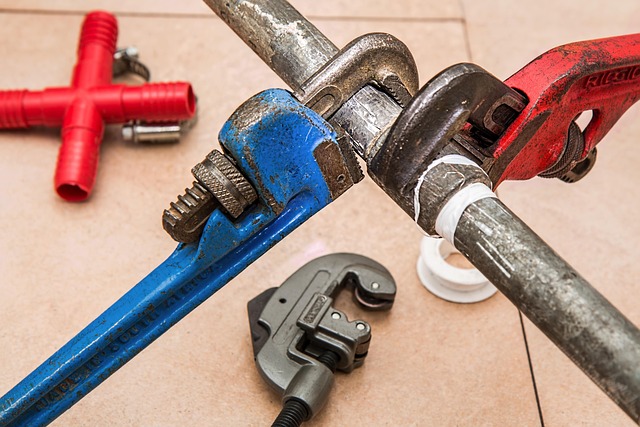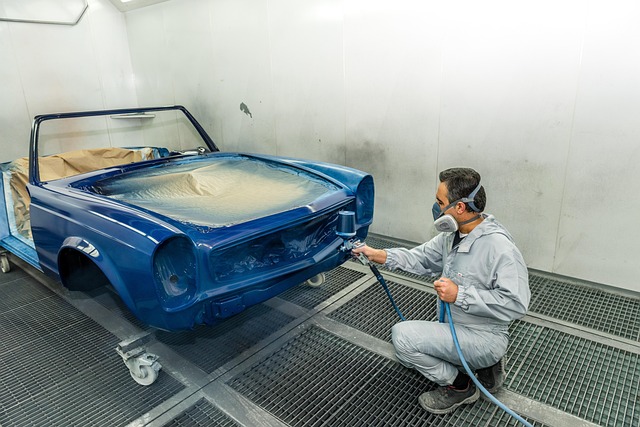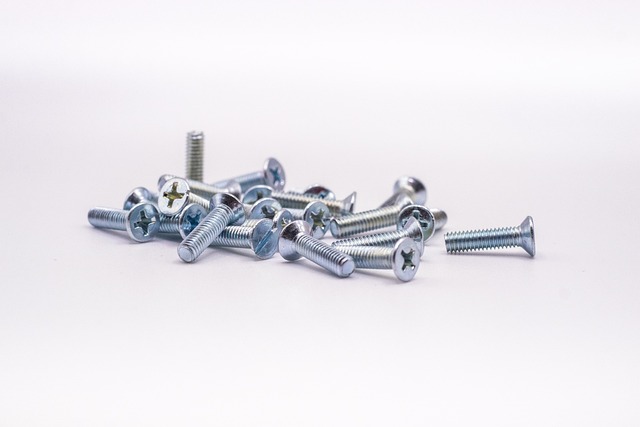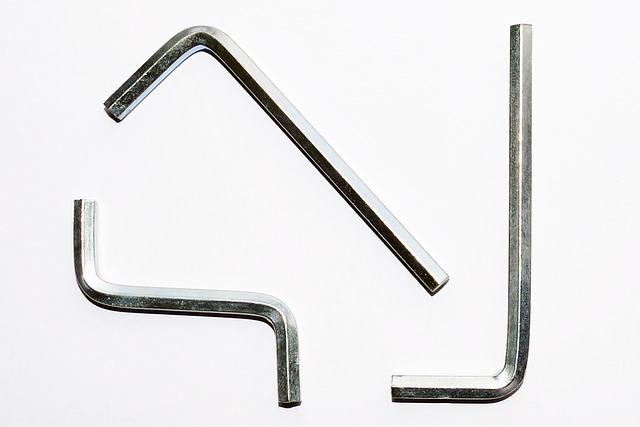Understanding and maintaining your vehicle's suspension system through DIY repairs is crucial for safety, performance, and cost savings. Regular maintenance, such as shock replacement, tire rotations, and filter changes, improves ride quality and efficiency. Addressing issues like worn shocks, control arm damage, or misalignment enhances handling and reduces fuel consumption. Using Select DIY Auto Repairs for parts and following safety guidelines ensure successful upgrades, from wheel alignment to engine tune-ups, leading to smoother drives, better tire life, and reduced maintenance costs.
Looking to enhance your driving experience with a DIY suspension upgrade? This comprehensive guide is tailored for car enthusiasts eager to explore auto repairs. We’ll walk you through understanding your vehicle’s suspension system, identifying common issues, and gathering essential tools and parts. Learn effective DIY solutions, follow a step-by-step repair guide, and discover the safety precautions needed. By the end, you’ll grasp the benefits of upgrading your car’s suspension, empowering you to make informed decisions with Select DIY Auto Repairs.
- Understanding Your Vehicle's Suspension System
- Common Suspension Issues and DIY Solutions
- Gathering Necessary Tools and Parts for Upgrade
- Step-by-Step Guide to a DIY Suspension Repair
- Safety Precautions When Performing Auto Repairs
- Benefits of Upgrading Your Vehicle's Suspension
Understanding Your Vehicle's Suspension System

Understanding your vehicle’s suspension system is crucial when considering any DIY auto repairs. The suspension acts as the bridge between your car’s wheels and chassis, ensuring smooth driving and control. It consists of various components like shocks, struts, springs, and control arms that work together to absorb road impact and maintain proper tire contact. Regular maintenance and occasional upgrades can significantly improve your vehicle’s handling and safety.
When it comes to DIY suspension upgrades, selecting the right parts is key. You might consider replacing worn-out components like shocks or struts for better ride quality and handling. Similarly, a simple yet effective task is to replace your car’s air filter, which can enhance overall performance by allowing cleaner air into the engine. Other tasks, such as performing a DIY radiator flush, ensure optimal cooling system efficiency. Even fixing a blown head gasket, though more complex, is within reach for dedicated DIY enthusiasts, offering them the satisfaction of mastering crucial auto repairs.
Common Suspension Issues and DIY Solutions

Many vehicle owners often overlook their car’s suspension system until it starts showing signs of wear and tear. Common suspension issues include worn-out shocks or struts, damaged control arms, loose or broken bushings, and misaligned wheels. These problems can lead to a rough ride, reduced handling, and even increased fuel consumption. Luckily, several DIY auto repairs can be performed to address these issues without breaking the bank.
For instance, replacing shocks or struts is a straightforward task that can significantly improve your vehicle’s stability and comfort. Regular tire rotation instructions, along with balancing, can also prevent uneven wear patterns on your tires, ensuring optimal performance and extending their lifespan. Some more advanced DIY solutions include fixing a blown head gasket, which, while challenging, can save you from costly engine repairs. Select DIY auto repairs that align with your skills and the issues at hand to keep your vehicle running smoothly and safely.
Gathering Necessary Tools and Parts for Upgrade

When tackling a DIY suspension upgrade, the first step is to gather all the necessary tools and parts. This includes basic tools like wrenches, screwdrivers, and socket sets, as well as specialized components specific to your vehicle’s make and model. A crucial part of the process is identifying the correct replacement parts, which can often be found at automotive stores or online marketplaces catering to Select DIY Auto Repairs.
Ensure you have all the essential tools and parts before beginning, including bushings, ball joints, and control arm assemblies if needed. For instance, a simple task like replacing the door seal car can significantly improve your vehicle’s overall performance. Additionally, consider having on hand supplies for other common auto repairs, such as a diy oil pan drain and refill kit, which can help you maintain optimal engine health alongside your suspension upgrade. Remember to always refer to trusted resources and guides tailored for DIY enthusiasts when navigating these repairs, including helpful tips on diy wheel alignment that will ensure your vehicle handles smoothly after the upgrade.
Step-by-Step Guide to a DIY Suspension Repair

Upgrading your vehicle’s suspension is an excellent way to enhance both its performance and safety, and with a bit of know-how, it can be achieved through a DIY project. Here’s a step-by-step guide for those considering taking on this task:
1. Safety First: Begin by ensuring your workspace is well-lit and organized. Park your vehicle on a level surface and engage the parking brake. Consider jacking up the car and securing it with wheel chocks for added stability during the repair process. Safety gear, including gloves and eye protection, is essential to protect yourself from any potential hazards.
2. Assess the Damage: Inspect the suspension components carefully. Common issues include worn-out shock absorbers, broken springs, or damaged control arms. If you’re repairing a dented fender or replacing door handles, ensure these tasks are addressed before focusing on the suspension to maintain overall vehicle balance.
3. Gather Tools and Parts: Create a list of required tools, such as jack stands, wrenches, sockets, and any specialized suspension tools specific to your vehicle model. Purchase replacement parts suitable for your make and year, including shocks, springs (if needed), and bushings. Remember, selecting the right parts is crucial for a successful DIY auto repair project.
4. Remove and Replace: Start by removing the wheels for easier access. Then, demount the damaged suspension components carefully. This may involve unbolting, unclamping, or detaching various parts. Once exposed, inspect each component for wear and damage. Replace worn-out parts with new ones, ensuring proper alignment and mounting.
5. Reassemble and Test: After installation, reassemble the suspension system, securing all components firmly in place. Lower the vehicle and test the suspension’s functionality by driving it at various speeds to ensure a smooth ride. If you’re also performing an engine tune-up at home or other maintenance tasks like replacing door handles, schedule these checks accordingly to catch any potential issues early on.
Safety Precautions When Performing Auto Repairs

When tackling any DIY auto repairs, safety should always be your top priority. Before beginning, ensure you have the right tools and equipment, and gather all necessary information specific to your vehicle make and model. Familiarize yourself with the basic mechanics of your car, especially if you’re attempting a complex upgrade like replacing a suspension system. Safety gear, such as gloves, eye protection, and a sturdy workbench, is essential for protecting yourself from potential hazards.
When working on critical components like the engine or transmission, remember to follow specific guidelines carefully. A simple task like a diy engine oil change can seem straightforward, but improper procedures may cause damage. Similarly, learning a diy timing belt replacement guide is crucial for maintaining your car’s reliability. Even routine checks, such as a simple transmission fluid check, require attention to detail and an understanding of the vehicle’s systems. Prioritize safety throughout the process to ensure both effective repairs and your well-being.
Benefits of Upgrading Your Vehicle's Suspension

Upgrading your vehicle’s suspension can significantly enhance your driving experience and safety on the road. By investing in this DIY auto repair project, you’ll enjoy smoother rides, improved handling, and better overall control over your car. Modern suspension systems are designed to absorb shocks and bumps, ensuring a comfortable journey for both passengers and cargo. An upgraded suspension can correct issues like uneven tire wear, poor handling, or an uncomfortable ride, all of which can be indications of worn-out parts.
This simple modification also offers long-term benefits, such as increased tire life, reduced maintenance costs, and enhanced fuel efficiency. It’s a cost-effective solution for those looking to avoid frequent visits to the mechanic. With some basic tools and knowledge, you can achieve professional-level results. Even tasks like wheel alignment or an engine tune-up at home become more accessible when you take control of your vehicle’s suspension. So, whether it’s addressing car battery charging problems or improving overall performance, upgrading your suspension is a smart choice for any car enthusiast.
Upgrading your vehicle’s suspension through DIY auto repairs can significantly enhance both the performance and safety of your ride. By understanding your car’s suspension system, identifying common issues, and following a structured guide, you can achieve substantial benefits. These include improved handling, increased stability, reduced noise, and longer tire lifespan. Remember, while DIY suspension upgrades offer cost-effectiveness and learning opportunities, safety precautions are paramount. Always ensure proper tools, parts compatibility, and follow recommended procedures to avoid potential risks. Embrace the rewards of a smoother, safer drive with your newly enhanced suspension system!
